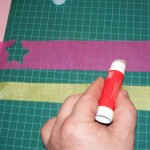Here’s how to fly it! There are also some advanced tips.

Free Video Instruction!
It’s a matter of positioning your workspace near a computer or bringing a laptop near your work-space. See the how to videos.
You can watch a step over and over till you understand it.
Ask for help!
This goes for those who are making a Squirrel out of their own materials too!
Write your name on your model
Put your name on your motor stick and your wing. In groups this will prevent confusion.
Also if you add your phone number you may get your plane back if it flies away.
Fly on a calm day or indoor
Ideally wind is less than 5 km/h (2 mph). Just before sun set or early morning, there is often less wind.
Use different colors of tissue paper
You can join pieces of tissue together using a glue stick before making your model. You can also cut out shapes and glue them onto the model after it is made. It takes some patience to apply glue stick to tissue without tearing it. Use the corner of the glue stick.
Avoid hitting walls by flying your plane in a circle

If your Squirrel turns, then it is easy to fly it indoors.
If not, you may want to add one or more ailerons to get control of the turning radius.
It’s easy make an aileron out of a piece of paper and then glue stick to the top or bottom of the trailing edge of the wing.
You bend the aileron up or down to make the wing rise or fall more.
It’s better to put them towards wing tips rather that towards the middle of the wing. It works well to have one aileron that’s about 2″ wide.
I’ve been making them about an inch in chord and that has been working fairly well. Indoor launch technique. You can bend the aileron up or down to change the turn radius or to make the airplane go straight.
You may need to adjust the wing fore and aft position after changing the aileron setting.Once you have a nice turn radius, launch your plane parallel to the wall in an indoor environment.

As you can see in the diagram at the right, it is better to launch th plane parallel to the wall. It’s a common mistake to put your back to the wall. If the plane turns it will come back to the wall right behind your back.
If your plane flies straight, then you may want to launch from a wall.
Less glue is more
Use as little glue a is needed to hold the pieces together. The glue will dry faster and less weight will be added to the airplane.
Crumple the wing tissue before starting
This will cause a bit of slack to be in the tissue. The airplane will last longer because if it is exposed to humidity and the tissue shrinks, it will be less prone to warping.

Store your Squirrel carefully
When not in use, hang your Squirrel on a picture frame or a flat screen television.
It will last longer.
If the wing is removed it can fit in a small box as well.
I broke my Squirrel!
There is a repair section showing video of the most common issues. If you are having a problem that’s not covered or are stuck, please contact Darcy the designer with your questions and comments!
I’m having problems flying my Squirrel
If you follow the directions in the flying instructions your Squirrel should fly well. Following are some things you can check. If you are still having problems, please contact Darcy the designer with an email.
- Make sure you are winding clockwise from the front!
- You need a couple hundred turns for a test flight. Are you winding it 200 turns?
- Did you follow the flying instructions to adjust the wing position?
- Is the fin straight? If you try and fly it before the glue is dry, the fin will tilt back and the fin tissue will become baggy. Make sure the glue is dry. You can correct the fin tissue using instructions in the repair section.
- Are you launching it properly? It’s a common mistake to throw the plane. It needs a gentle level release. Take a look at the flying instructions and make sure you’re releasing it properly.
- Is the wing warped? If you expose your Squirrel to moisture or leave it in a car in the sun, excessive heat could cause problems. Check out the repair section on how to correct a warped wing. Sometimes you can twist the wing back or use an aileron to correct for this. See the tip section for how to make an aileron.


